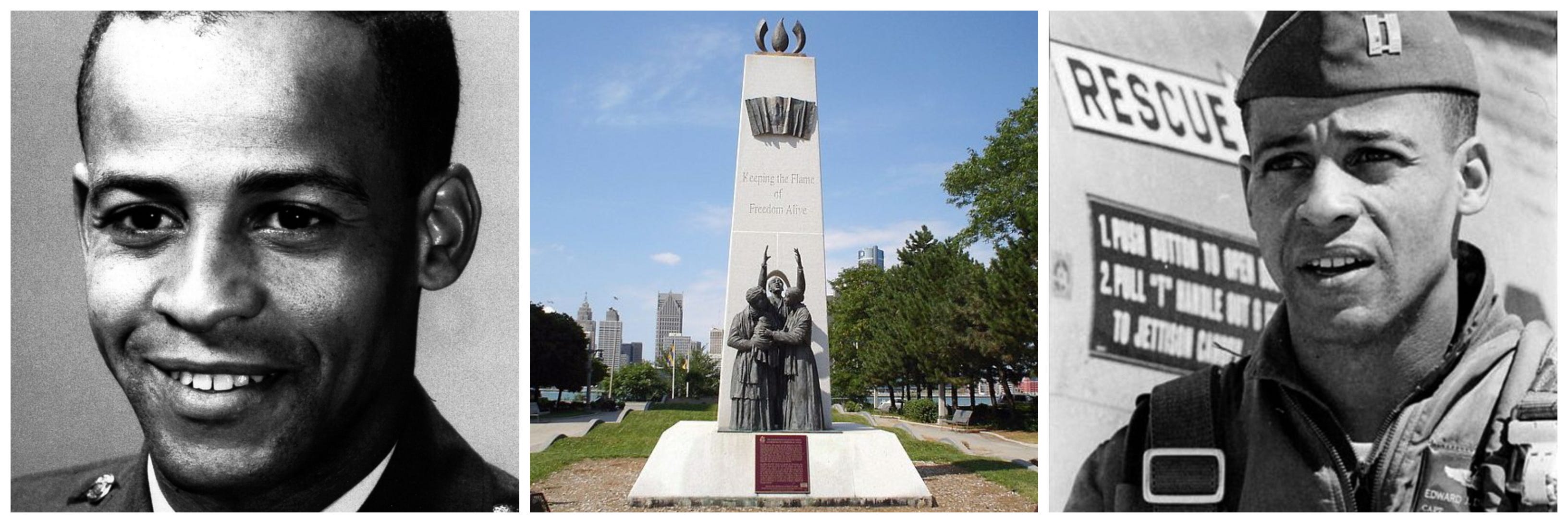Born in Kansas City, Kansas in 1933, Dwight’s father, Ed Dwight, Sr, played second base for the Kansas City Monarchs of the Negro League. His mother, Georgia Baker Dwight, encouraged the boy from a young age, and Ed Jr. became an avid reader, able to work well with his hands — including creating art, a passion to which he would later return.
Dwight dreamed of flying jet aircraft, joining the U.S. Air Force beginning in 1953. Eight years later, he earned a degree in aeronautical engineering from Arizona State University.
Following his completion of the experimental test pilot course, Dwight aerospace research pilot training, while he completed training to become an astronaut.
In 1961, President Kennedy selected Dwight to enter training as an experimental test pilot, in preparation for a flight to space as America’s first African-American astronaut. The pilot suddenly found himself catapulted onto the covers of magazines and on the front pages of newspapers around the world. At a time when the Soviet Union was beating the United States in the space race, the young jet pilot represented a chance for the United Sates to win a much-needed ground-breaking flight.
“To see an Ed Dwight walking across the platform getting into an Apollo capsule would have been mind-boggling in those days. It would’ve had an incredible impact,” stated Charles Bolden, the first African-American to head NASA.
The following year, Dwight piloted his F-104 Starfighter jet to an altitude of 80,000 feet before cutting his engines, staring at the curvature of the Earth below his craft. It was the closest he would ever come to reaching space.
“Facing severe discrimination from other astronauts, Dwight persevered until President Kennedy’s death, when government officials created a threatening atmosphere. He resigned in 1966, never having gone into space,” The History Makers reports.
Space travel benefits us here on Earth. And we ain’t stopped yet. There’s more exploration to come. — Nichelle Nichols, Nyota Uhura, Star Trek
Much like Jerri Cobb and the women of Mercury 13, the political will to see an African-American in space was pushed to the back burner with the drive to land on the Moon and the budget cutbacks that followed that success.
On August 30, 1983, Guion Bluford became the first African-American to reach space, flying aboard the space shuttle Challenger. Bluford would go on to log 688 hours in space aboard four shuttle missions.
